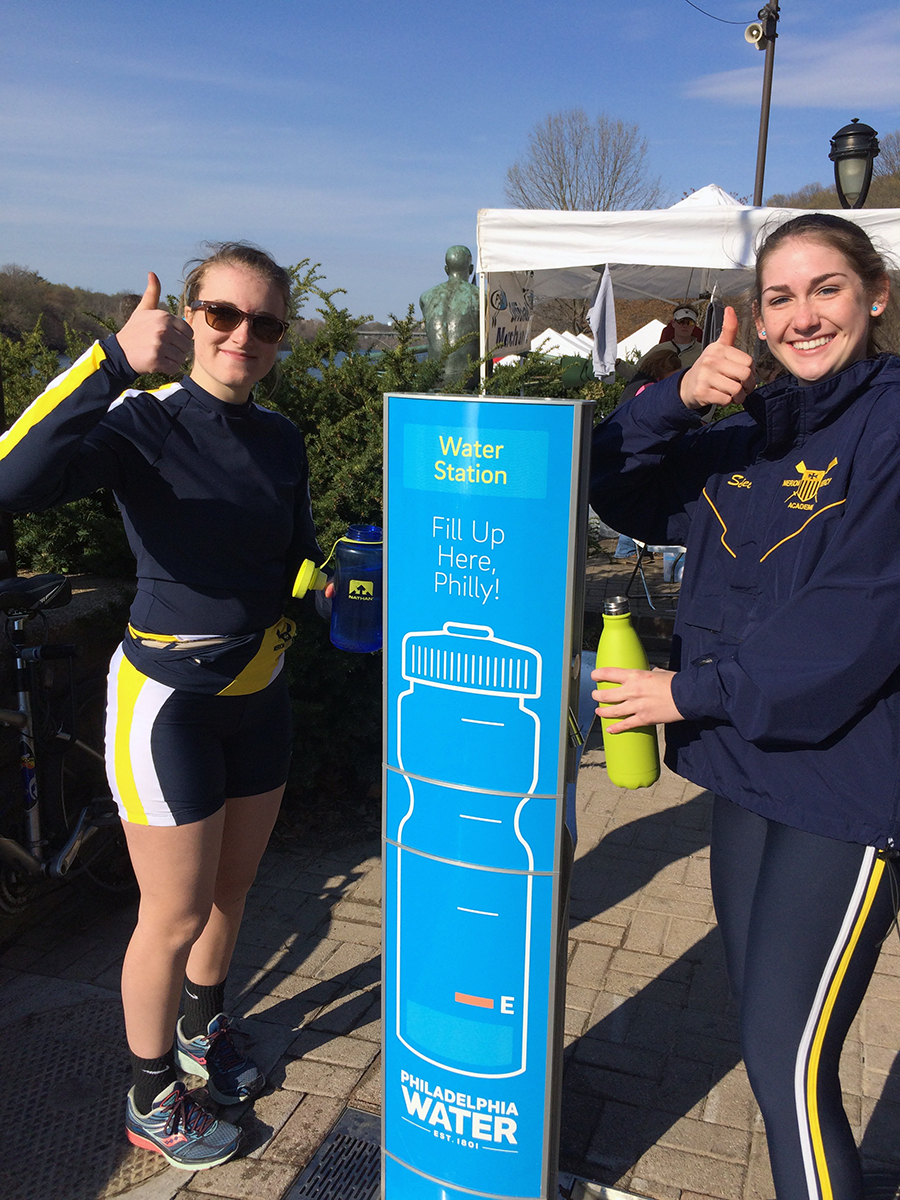Kelly Drive Water Stations Head to Hibernation After a Thirsty Season

Schuylkill River Trail users fill up at one four water stations located along Kelly Drive. People filling up at the stations saved about 156,025 single-use half-liter disposable bottles this season. Credit: PWD
Following an enthusiastic welcome in spring and a summer of heavy use, we’ve winterized the four new water stations installed along the Kelly Drive stretch of the Schuylkill River Trail.
Shutting the stations down as we approach winter involves turning off the water, draining the lines, and giving each of the units a good cleaning. We know: it’s sad to see these amazing assets for trail users go into hibernation, but it’s a necessary precaution needed to make sure that extreme cold doesn’t lead to frozen and burst pipes during the colder months of the year.
While we’re on the topic, now is a good time to note that homeowners should be thinking about winterizing at home too. From shutting off outdoor hose connections to insulating basement windows near your water meter, there are number of things homeowners can do to prevent extreme cold from causing damage that a can lead to flooded basements and costly repairs. You can check out some cold-weather tips here.
As for the Kelly Drive stations—conveniently located between East Falls and the Art Museum along one of our region’s most popular recreation routes—they’ll be turned on again in spring 2017.
And, if next year is anything like 2016, the stations will keep tens of thousands of wasteful disposable bottles from becoming litter or landfill waste and save local trail users tens of thousands of dollars, too.
Trail users drank an average of about 5,150 gallons of top-quality Philadelphia drinking water at each of the four Kelly Drive stations this season, bringing the total of water distributed from the beginning of June to the end of October to about 20,600 gallons.
That’s the same as roughly 156,025 single-use half-liter disposable bottles—plastic waste that, statistics show, has a very good chance of ending up either in a landfill or as litter in our parks and rivers. The sad fact is, only about 1 in 5 disposable water bottles ends up getting recycled.
And, if we think about that in terms of spending, buying the same amount of single-use disposable bottles at a Philly convenience store would add up to nearly $217,000.
Of course, given Americans now consume about 50 billion disposable bottles per year, it’s a drop in the bucket. But the City of Philadelphia and the Office of Sustainability see these four stations as a model than could be expanded to neighborhoods and trails all over the city. Expanded access to public drinking water is great way to reduce waste and litter while encouraging healthy habits like replacing sugary beverages with the ultimate no-calorie drink—good old fashion H2O.
Increasing clean water access at home and improving availability of drinking water in the city’s schools and public spaces will help meet all residents’ basic need for water.
We recently asked for information from companies and organizations that could help to create a network of water stations serving more companies, and the City plans to explore the idea more in the coming year.
We’ll keep you up to date as that project moves along, and we’ll also make an announcement when the water stations on Kelly Drive are back and flowing. You can read more about how increased public access to drinking water plays a role in the City’s vision for a healthy and sustainable future by checking out the latest Greenworks plan, released November 2.
In the meantime, fill up at home to take advantage of top-quality water that costs less than a penny per gallon and keep on choosing to reuse for the sake of our planet and your wallet!